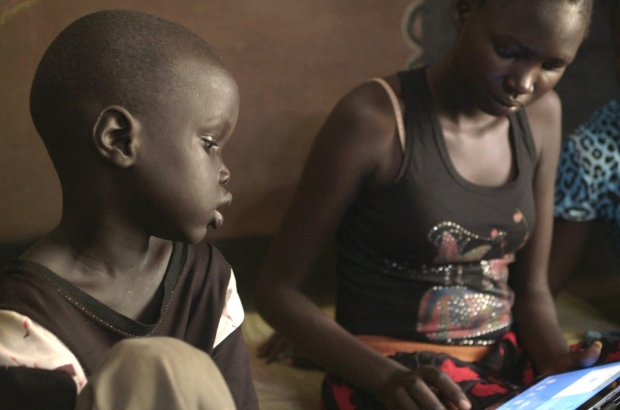- Daily & Weekly newsletters
- Buy & download The Bulletin
- Comment on our articles
Brussels filmmaker helps refugees reconnect with their families
A short downpour has turned the streets of Kakuma into a muddy pool. This is only a minor nuisance to Lieven Corthouts, who had just returned to this refugee camp in Kenya.
The Brussels-born filmmaker’s latest documentary, The Invisible City [Kakuma], is the result of his four-year stay here, and he has come back to show it to its main protagonists.
Corthouts, who made two previous documentaries set in Ethiopia, initially planned to live in Kakuma for a couple of years. “But after a while, I realised that I would need more time to tell the story,” he explains. “At first sight, things seemed quite all right in the camp, but, over time, it became clear to me that most young people have set their mind on leaving. I’ve heard stories about going to Europe or the United States, but only later did I realise the full scope of these aspirations.”
In the end, it would take Corthouts four years to finish the story of Kakuma, the sprawling refugee camp that is home to some 200,000 people. The name of the camp means “nowhere” in Swahili, and it came into existence 20 years ago to shelter people displaced by the civil war in neighbouring Sudan. Now, Kakuma is also home to a large number of refugees from Ethiopia, Eritrea and Somalia.
You’ve got a new match
“I set out to tell the story of a refugee camp that looks like any other, but in reality, Kakuma has all the features of a normal African city,” Corthouts says. “Still, the more I got involved, the more I realised that young people look at Kakuma as a steppingstone to a better life.”
Many youngsters from South Sudan, he continues, “come her to get a decent education, something they lack in their own country. Then they move on. Or at least try to.”
Their struggle became the focus of the documentary. Corthouts’ previous stays in Ethiopia helped him integrate in Kakuma, and – to gain trust from the different communities – he taught in a school and worked in one of the camp’s many phone shops.
It was there that a new idea crossed his mind. “There are three main characters in the documentary,” he explains. “One of them is a young girl whose mother still lives in South Sudan. If the mother were to ever come to Kakuma, it would take her a lot of time and effort to find her daughter.”
This is not a unique case, says Corthouts. “Many youngsters who live in the camp have been separated from their families. I started thinking of a way to reconnect people who had lost track of each other. Most people here have smart phones, and Kakuma has reasonable internet coverage, so an app seemed do-able.”
The UN refugee agency, which manages Kakuma, restricts the camp’s residents from sharing information about their relatives. With the mobile app, people can indicate where they are and who they’re looking for.
If there is a match, both parties receive each other’s phone numbers. For security reasons, it takes a few steps to register, but there are already more than 3,000 users and several matches.
Universal dreams
The Find Me app was developed in collaboration with the camp’s residents. “That it was made with the locals is one of its main advantages,” explains Corthouts. “The staff from the phone shop where I worked helped me map out the concept.”
Corthouts has returned to Kakuma to screen his documentary, but also to fine-tune the app. Several organisations, including the Red Cross, have expressed interest in the project. “It would be great if a big NGO backed the app, especially financially, but it is crucial that it remains in the hands of the refugees. This is the key to its success.”
The Invisible City [Kakuma] has screened at film festivals and in schools in Belgium and Nairobi. “It’s been well received by youngsters in both places,” says Corthouts. “After all, the film speaks about the dreams and aspirations of the young residents of Kakuma, and that is something youngsters anywhere can relate to.”
Photo courtesy Cassette for Timescapes









